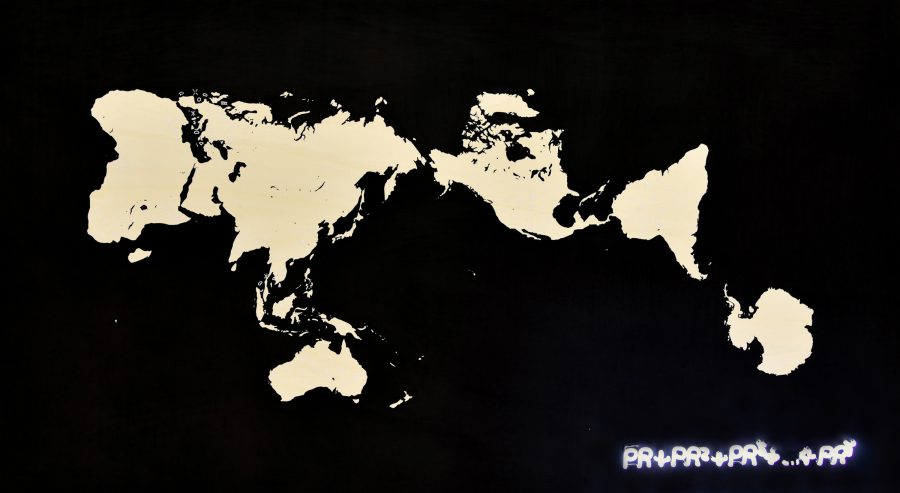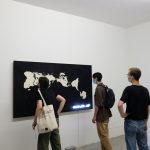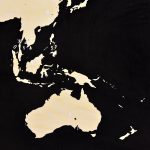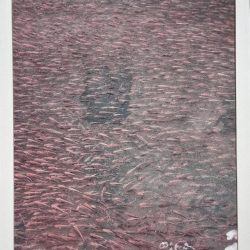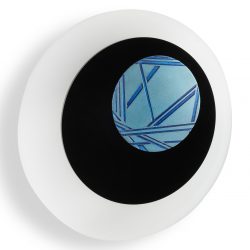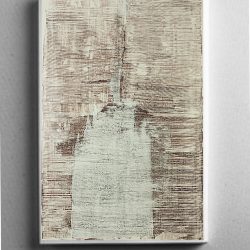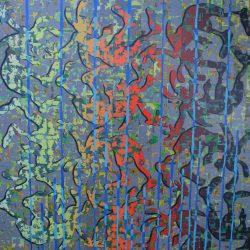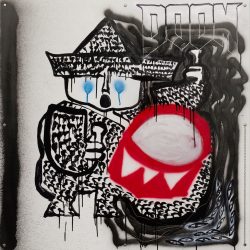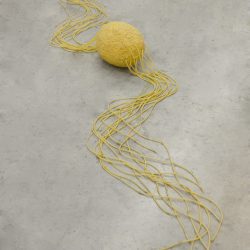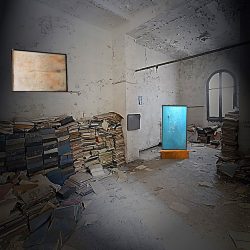work
L’assenza delle parole nella struttura del silenzio
| category | Installation |
| subject | Political / Social, Abstract |
| tags | Installazione, geografia, silenzio, parola, simboli preistorici, neon, disegno, mappa, mondo, progresso |
| base | 200 cm |
| height | 110 cm |
| depth | 10 cm |
| year | 2019 |
Charcoal, adhesive vinyl in pre-spaced and phosphorescent acrylic on wood, neon sign, transformer, relay. Edition 1 + 1 A.P.
The work created for the 20th Cairo Prize, "The Absence of Words in the Structure of Silence," is a map of the world imprinted on a wooden panel with a black background, replicating the most realistic planisphere to date according to studies by Japanese architect Hajime Narukawa. It is an unconventional design, where Luli traces prehistoric symbols with fluorescent paint and inserts a neon sign, which reproduces an arithmetic formula that is an expression of human progress. In addition, an electrical device deactivates the sources that illuminate the work for cyclical time intervals, during which the map disappears, leaving only the primordial signs visible. This is how an interactive and mental short-circuit is created that reflects geographical changes.
We must recognize that in our hyper-modern society, culminating with the computerization of social life, we find ourselves living in a mass condition with growing knowledge, preferences, and expectations that we are quick to adopt and remove without an effective action of sociocultural rooting. The consequence is thus inevitable: the questioning of a possibility to be passed on between generations and to persist throughout history. A rather awkward situation, don’t you think? Though language has always been around us, since the beginning. The difference between then and now is not about sophistication, as much as it is about space; the space in which it exists, and the space imagined as such. In this sense, "L’assenza delle parole nella struttura del silenzio" [The Absence of Words in the Structure of Silence] is emblematic, because in an era of domestication of life – a very loud one – we fear silence. A silence that is not empty, nor is void, but is richness and relation, in connection with its surroundings.
The work created for the 20th Cairo Prize, "The Absence of Words in the Structure of Silence," is a map of the world imprinted on a wooden panel with a black background, replicating the most realistic planisphere to date according to studies by Japanese architect Hajime Narukawa. It is an unconventional design, where Luli traces prehistoric symbols with fluorescent paint and inserts a neon sign, which reproduces an arithmetic formula that is an expression of human progress. In addition, an electrical device deactivates the sources that illuminate the work for cyclical time intervals, during which the map disappears, leaving only the primordial signs visible. This is how an interactive and mental short-circuit is created that reflects geographical changes.
We must recognize that in our hyper-modern society, culminating with the computerization of social life, we find ourselves living in a mass condition with growing knowledge, preferences, and expectations that we are quick to adopt and remove without an effective action of sociocultural rooting. The consequence is thus inevitable: the questioning of a possibility to be passed on between generations and to persist throughout history. A rather awkward situation, don’t you think? Though language has always been around us, since the beginning. The difference between then and now is not about sophistication, as much as it is about space; the space in which it exists, and the space imagined as such. In this sense, "L’assenza delle parole nella struttura del silenzio" [The Absence of Words in the Structure of Silence] is emblematic, because in an era of domestication of life – a very loud one – we fear silence. A silence that is not empty, nor is void, but is richness and relation, in connection with its surroundings.



